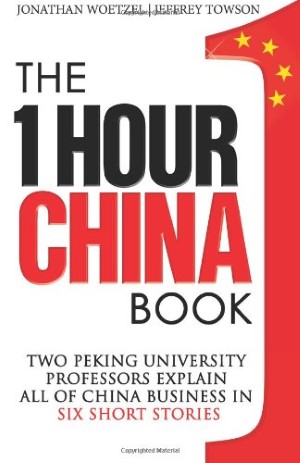
Because of this blog, our China lawyers get a fairly steady stream of China law questions from readers, mostly via emails but occasionally via blog comments or phone calls as well. If we were to conduct research on all the questions we get asked and then comprehensively answer them, we would become overwhelmed. So what we usually do is provide a super fast general answer and, when it is easy to do so, a link or two to a blog post that provides some additional guidance. We figure we might as well post some of these on here as well. On Fridays, like today.
In the last couple of weeks I gave a rash of interviews (see here and here) which have been picked up by quite a few very popular Chinese and Vietnamese language websites. This has — believe it or not — led many people to send me multi-question emails seeking my views on the housing market in various cities (so far, Vancouver, Los Angeles, New York, and Paris) and whether it will be possible for them to get their money out of China to buy properties, along with emails from realtors asking me (for free of course) to tell them how to help their Chinese buyers get their money out. My response to the emails asking me to determine housing prices (and even to tell them whether they should buy in one city or another) is to say that I have no clue and if I did know the answers, I would charge them a fortune for the advice. As for how to get money out of China, I give the typical lawyer answer: I would need a lot more facts and then I would need to conduct extensive research.
Our China lawyers often get really deep, complex questions, to which my answer is usually, “I have no idea.” These questions usually come via email and they range from someone asking whether such and such industry would be a good investment to whether they should do a deal or buy a product from such and such Chinese company (which 99 times out of 100, I have never heard of), to whether I think China will eventually surpass the United States (to which I like to reply by saying in what?) to where we think China’s economy is headed in the next six months/one year/indefinite period (to which I reply by saying that if I knew I would be an investment advisor, not a China attorney).
My favorite economy-related question of late is the broad-brush one, of which the following is fairly typical (it’s a combination of two very similar e-mails):
I have to write a paper for __________ Community College and so would you please answer the following questions for me:
- How does China’s economy compare to the United States? Have their been any changes in the last five years?
- Do you see China going past the United States and when?
- Is China’s economy better or worse than the United States?
- What does China need to do to keep growing so fast?
- Does free trade help China?
I responded by 1) not criticizing the incredible vagueness of the questions and 2) simply saying that the questions should be going to an economist, not me.
But about ten minutes ago, I got an email from a friend (an old China hand) who pointed out how we have many times in the past together expressed our skepticism about China’s economy continuing to grow and, most importantly, whether China has what it takes to “escape the middle income trap.” My friend concluded his email by asking me if I thought that what is happening with China’s economy today is “nothing more than China having hit against the middle income ceiling.” My response was, “great question. In fact, such a great question, I am going to answer it on the blog right now.”
So here goes.
Way back in 2010, In China, Malaysia, Korea And The “Middle Income Trap”, I first wrote about the middle income trap, defined as follows:
I just learned a new term today that I know I will be using frequently in the future. The term is “middle income trap” and it crystallizes some of my previously discombobulated thoughts I have had regarding economic development. Let me explain.
This new term (for me) comes from a post by Michael Schuman on Time Magazine’s Curious Capitalist blog, entitled, “Escaping the middle-income trap.” The post focuses on how Malaysia’s economic growth has been so consistently strong since World War II, yet has been slowing over the last few years and of how Malaysia just cannot seem to break into the league of developed nations. Schuman defines this “trap,” as follows:
I returned a few days ago from Kuala Lumpur, the capital of Malaysia, where the talk of the town – well, at least among economists — is the “middle-income trap.” What’s that, you ask? A developing nation gets “trapped” when it reaches a certain, relatively comfortable level of income but can’t seem to take that next big jump into the true big leagues of the world economy, with per capita wealth to match. Every go-go economy in Asia has confronted this “trap,” or is dealing with it now. Breaking out of it, however, is extremely difficult. The reason is that escaping the “trap” requires an entire overhaul of the economic growth model most often used by emerging economies.
The concept behind the “middle-income trap” is quite simple: It’s easier to rise from a low-income to a middle-income economy than it is to jump from a middle-income to a high-income economy. That’s because when you’re really poor, you can use your poverty to your advantage. Cheap wages makes a low-income economy competitive in labor-intensive manufacturing (apparel, shoes and toys, for example). Factories sprout up, creating jobs and increasing incomes. Every rapid-growth economy in Asia jumpstarted its famed gains in human welfare in this way, including Malaysia.
However, that growth model eventually runs out of steam. As incomes increase, so do costs, undermining the competitiveness of the old, low-tech manufacturing industries. Countries (like Malaysia) then move “up the value chain,” into exports of more technologically advanced products, like electronics. But even that’s not enough to avoid the “trap.” To get to that next level – that high-income level – an economy needs to do more than just make stuff by throwing people and money into factories. The economy has to innovate and use labor and capital more productively. That requires an entirely different way of doing business. Instead of just assembling products designed by others, with imported technology, companies must invest more heavily in R&D on their own and employ highly educated and skilled workers to turn those investments into new products and profits. It is a very, very hard shift to achieve. Thus the “trap.”
Schuman went on to write on how South Korea is “probably the best current example of a developing economy making the leap into the realm of the most advanced.” Schuman did not see Malaysia making the leap. Its companies are not innovating. Its private investment is declining and it spends almost nothing on R&D. “If Malaysia is going to break the “trap,” it has to reverse all of these trends.”
Though both Korea and Malaysia relied on exports to generate growth, they did so differently. South Korea created homegrown, internationally competitive industries. “Korea is where it is today because its private companies have been working on getting there for a very long time, backed in full by the financial sector and the government.”
Malaysia, on the other hand, “relied much, much more on foreign investment to drive industrialization. That’s not a bad thing – multinational companies provide an instant shot of capital, jobs, expertise and technology into a poor country. MNCs, however, aren’t going to develop Malaysian products; that has to take place in the labs and offices of Malaysia’s private businesses. But those businessmen have been content to squeeze profits from serving MNCs and maintaining their original, assembly-based business models.”
I concluded this post by comparing Malaysia and Thailand to mid-sized law firms, but I intentionally did not discuss China’s ability to make the leap, mostly because it was during a period when I was worried that doing so would have wall-like (if you catch my drift) repercussions:
Malaysia and Thailand remind me a bit of the mid-size law firm. I can understand hiring the big firm for the big deal or the big case requiring a massive number of associates or legions of highly specialized partners. And I can understand hiring a highly efficient and focused small firm. But I rarely understand hiring the mid-sized firm, which usually tries to price itself along the same lines as the big firms, but without the corresponding depth or expertise. Why bother? And nothing against either Malaysia or Thailand, but I think many businesses have asked themselves this very question.
I returned to the subject again in 2012, in Will China Escape the Middle Income Trap? In this post, I wrote briefly about a hugely influential talk I had recently seen:
I was on a panel this past weekend at the Wharton China Forum 2012 and while there I had the opportunity to listen to a great lecture by world-renowned economist, Augusto Lopez-Claros. I asked Professor Lopez-Claros whether he thought China would be one of the rare countries that breaks through the middle income trap and his answer was a resounding “it’s possible.” He then went on to note how only five countries have really done that and become developed: South Korea, Japan, Singapore, Hong Kong and Chile. I’m not even sure Singapore and Hong Kong are even large enough to count. I am not prepared to say that China will not be able to burst through the middle income trap, but I will say that I think those who just assume that it will are ignoring all sorts of things.
In 2013, I raised the same issue again in Will China Avoid The Middle Income Trap? Four Ways To Make That Likely. That post focused on a Wall Street Journal article listing out the four things Asian countries need to do to escape the middle income trap:
The Wall Street Journal’s Real Time China Blog just came out with a post, entitled, Four Ways Asia Can Avoid the ‘Middle-Income Trap’ setting out what Asia’s emerging economies (“defined by the International Monetary Fund as China, India, Indonesia, Malaysia, the Philippines, Thailand and Vietnam) must do to avoid getting “trapped.” The post is based on an IMF report that came out earlier this week in which IMF economists suggest four ways to avoid that”:
- Invest in infrastructure. IMF analysis suggests that subpar infrastructure is a key factor that can check an emerging economy’s growth. India, the Philippines and Thailand are particularly exposed in this area and should focus on building new and upgrading existing public transit systems, freight channels, ports and energy infrastructure.
- Guard against excessive capital inflows. Money flows from abroad can energize an economy and give domestic consumption a boost, but can send an economy south if investors retreat in a hurry. Policy makers should have macro-prudential controls in place to mitigate potential rapid outflows, the IMF said.
- Boost spending on research and development and post-secondary education. Both are needed to foster the innovation that’s a hallmark of advanced economies. Malaysia and Thailand have the highest college enrollment rates among emerging Asian economies, but China is rapidly catching up, according to IMF data. China far outstrips other developing Asian countries on R&D, with 2009 spending at more than 1.5% of GDP.
- Get more women into the workforce and raise the retirement age. Aging populations are a problem in much of Asia. Governments can take steps to reduce “dependency ratios” by raising the age when workers are eligible for pensions and encouraging girls to enter university and vocational training.
I ended the post with a series of questions:
It is an interesting list, but I wonder how predictive it really is. If it is accurate, my sense is that China will do quite well over the next 50 years. But is it accurate? Are these four things really enough? And is China doing a good job with the above four things? What about economic reform? What about rule of law? What about IP protection? What about innovation? What do you think?
Just for the fun of it, let’s analyze whether China in fact has done the four things it “needed” to do.
First, China has invested in infrastructure. I do not think this can be disputed. Yes, you can say that they spent too much here and not enough there, but overall, China has invested in infrastructure.
Second, it’s not clear to me what constitutes “excessive capital inflows” and so I do not really know whether China is guilty of that or not.
I do not think China meets the third requirement of research and development. I say this because I am always shocked at the unwillingness of Chinese companies (including the biggest and the best of them) to truly invest in R&D the way American, Japanese or European companies do. Yes, Chinese companies claim to invest in R&D, but what I mostly see is that they spend way too little, are unwilling to bring in the really top people from around the world to help, and then they fail. And after they fail, they shop around and pay for the technology from a non-Chinese company. Now mind you, I am absolutely not complaining about this at all. In fact, I revel in this because one of the fastest growing areas of my law firm is drafting the technology licensing agreements that make these technology transfers possible. And I believe this number three is the most critical component in a country “making the leap” from middle income to developed.
I think China has done a decent job with item number four.
So then back to the big question. Is the state of China’s economy right now going to be a perpetual condition because it is merely the result of China’s not having the “whatevers” in place to allow it to go from being a middle income country to a developed one? Sorry, but you should ask that of an economist.
But what do you think?
 Because of this blog, our China lawyers get a fairly steady stream of China law questions from readers, mostly via emails but occasionally via blog comments or phone calls as well. If we were to conduct research on all the questions we get asked and then comprehensively answer them, we would become overwhelmed. So what we usually do is provide a super fast general answer and, when it is easy to do so, a link or two to a blog post that provides some additional guidance. We figure we might as well post some of these on here as well. On Fridays, like today.
Because of this blog, our China lawyers get a fairly steady stream of China law questions from readers, mostly via emails but occasionally via blog comments or phone calls as well. If we were to conduct research on all the questions we get asked and then comprehensively answer them, we would become overwhelmed. So what we usually do is provide a super fast general answer and, when it is easy to do so, a link or two to a blog post that provides some additional guidance. We figure we might as well post some of these on here as well. On Fridays, like today.










